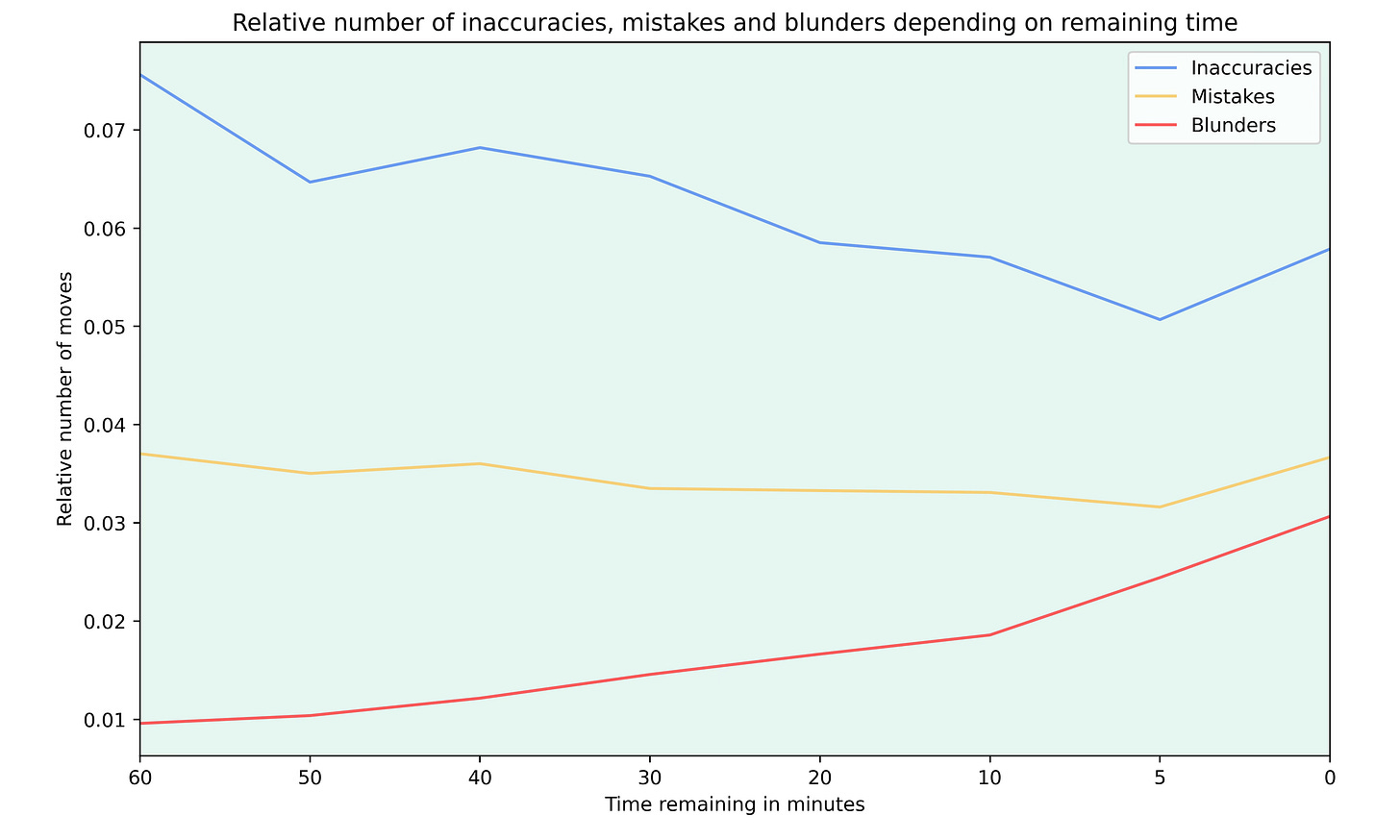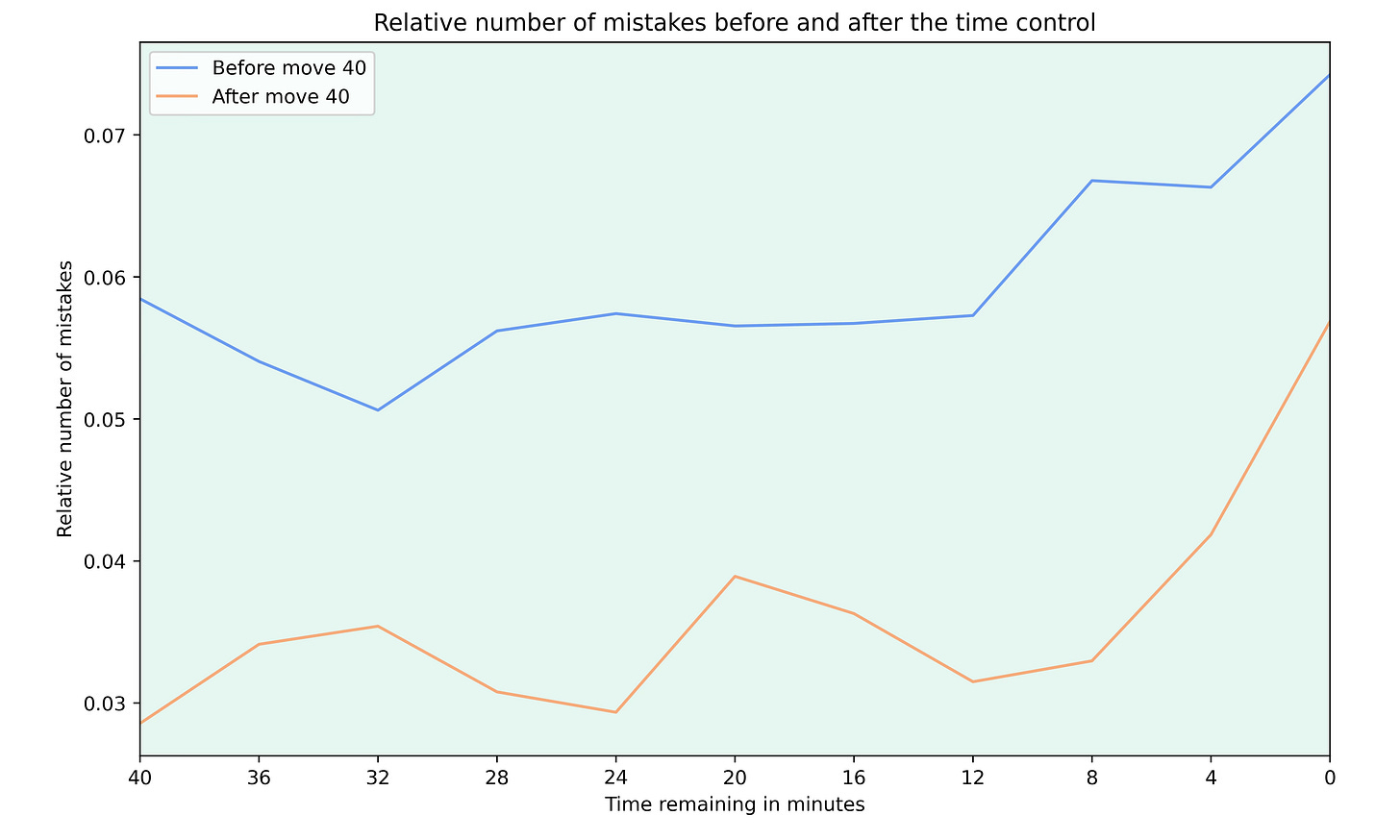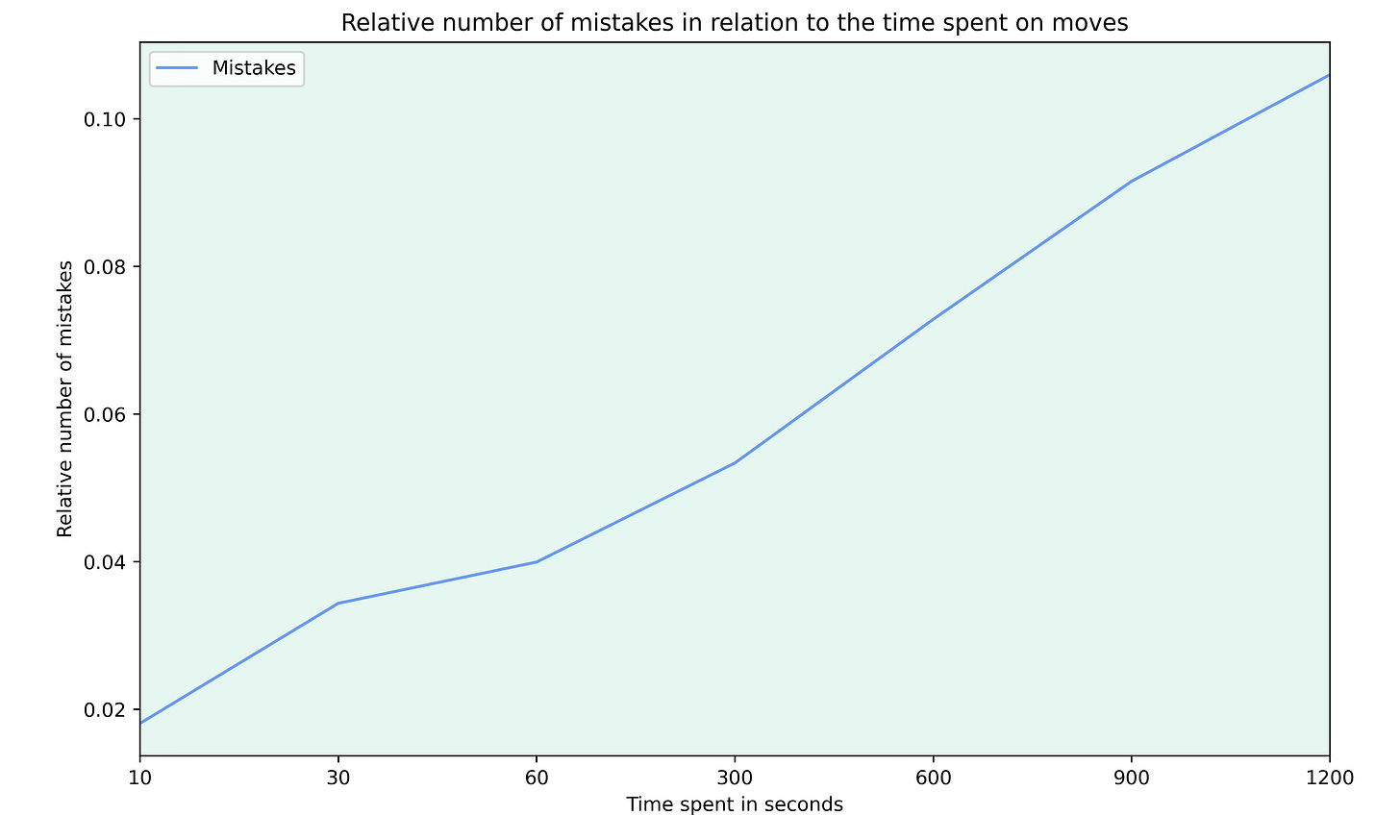How does the Clock impact the Rate of Mistakes?
Looking at the relative number of mistakes depending on the time left on the clock
I’ve looked at some situations where grandmasters make mistakes in the past, but one important thing I left out was looking at the clock times. This is what I want to do in this post.
For this post, I decided to look at OTB games played with a time control of 100+30 with 50 minutes added after 40 moves, as this was the time control of the recent Grand Swiss tournament. I also included games from the 2023 Grand Swiss, the previous two editions of Wijk aan Zee and the first two rounds of the Bundesliga, as they had the same time control.
Inaccuracies, mistakes and blunders
The first question that came to mind was how the remaining time influences the rate of inaccuracies, mistakes and blunders.
As always, I used the expected score before and after a move was played to define these move categories. An inaccuracy is a move that drops the expected score by at least 5%, a mistake drops is by at least 10% and a blunder by at least 20%.
Plotting the relative number of moves in these categories in relation to the remaining time before the move was played gave an interesting picture.
One surprising thing is that the number of inaccuracies actually reduces when the players get low on time and the number of mistakes stays roughly steady. Only the blunders increase is I intuitively expected.
I believe the reason for this is that evaluations tend to be more extreme in endgames. A position is either a win or a draw, so suboptimal moves tend to be blunders instead of inaccuracies or mistakes.
In the graph above, I just considered the time remaining on the clock. However, since the players get extra time after move 40, there are actually two different phases when players are low on time. So I decided to look at the mistakes (which includes the blunder category from above) before and after the time control separately.
There are a lot more mistakes in the 40 minutes preceding the time control than after the time control. My guess is that the positions are usually more complicated before move 40 and tend to settle a bit as the game goes on longer.
It’s interesting to see that time trouble leads to many more mistakes after the time control than before it. I think that the main reason for this is that players are more exhausted and they can’t delay critical decisions, as is often done before move 40 to get the additional thinking time.
Mistakes depending on thinking time
Another thing I wanted to look at was if the thinking time impacts the rate of mistakes.
It looks like thinking for a long time leads to worse moves. But I don’t think one should take away too much from this data, as players play quickly when they know a position or have simple moves to play and think longer in complex positions where mistakes are more likely. As always, correlation does not imply causation.
Final thoughts
Another interesting direction to take this would be to see if certain players better cope with time trouble than others. Maybe there are heroes in time trouble after all. However, my main problem is that it’s difficult to get the game files with the time stamps, as I have to download the games from each tournament individually. So I’m not able to easily get PGN files with time stamps for all (or most) games of individual players. But it’s an aspect I’ll look at in future tournament recaps.
Let me know if there are any other time related things you’re interested in.





Good stuff Julian! I am definitely interested in this topic- we need a deep dive on Grischuk's time management! Does he play unusually well in time trouble? And maybe as a counter-balance a player like Quparadze who is known for playing extremely quickly. Does he blunder more often than a typical player?